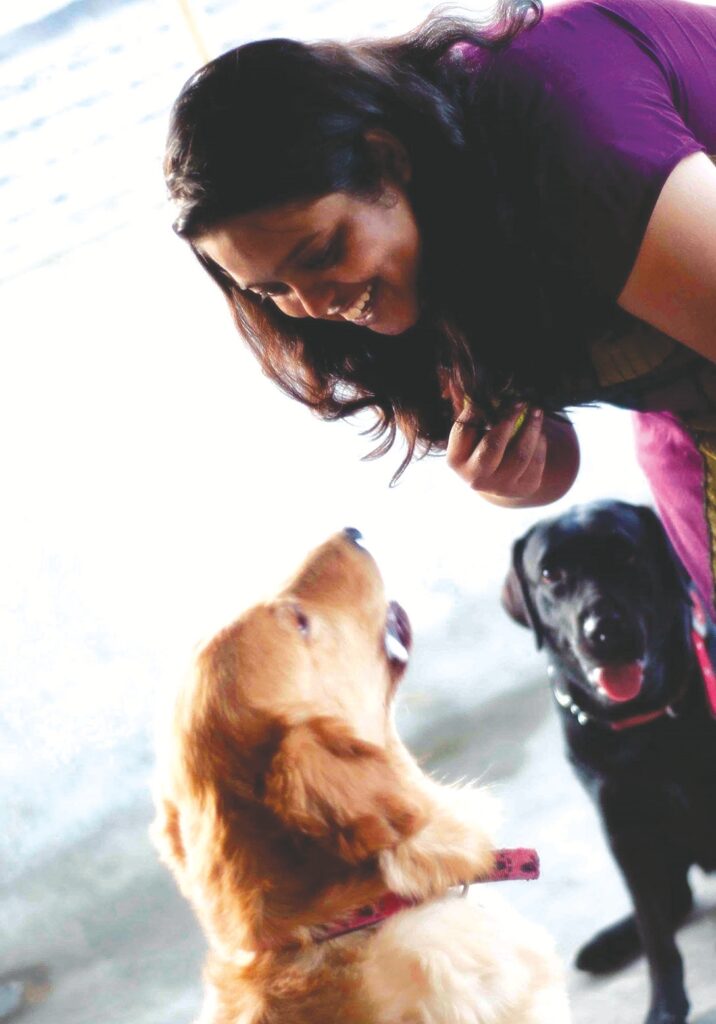Breaking the shackles of bad Behaviour
If you are a new pet parent, there would be many behaviours of your pet that you might find strange and sometimes even annoying. You need to keep calm and handle it all with care. Learn what behaviours reveal.
–by Malaika F.
 Couch diggers in action
Couch diggers in action
It is important to understand the behaviour first and the need to engage in it. To the dog this behaviour is natural and one that helps them cope and calm down post a stressful day/events.
Instead of modifying this behaviour or stopping it, identify triggers so they can be minimized. Offer your pet an alternative space where they can dig such as their own bed, treats hidden in bedsheet in a laundry basket etc.
Stop your naughty scavenger!
A lot of pet parents ask – How do I stop my dog from raiding the dustbin?
Dog’s befriended us several centuries ago. This mutually coexisting relationship benefits both species. They are scavengers by nature. Rotting and putrefied food (as dogs see the world through their noses) induces a genetically programmed canine survival instinct mechanism in them to raid your dustbin. Because “prevention is better than a cure” it’s best to have your dustbin in a physically inaccessible place, so that your naughty furry friend cannot be the dustbin raider- he/ she is born to be !
Curb food aggression and build a happy relationship with food
Aggression towards food is real and here’s how you can control it. Dogs as pets already experience a dearth of natural behavioural choices. The idea that you should be able to take away their food bowl while they are eating is a horrible one.
In the past, parents taught their children to leave the dog alone while he ate, which was a good practice. What’s sad is that dogs now get labelled as “food aggressive” for a behavior that comes naturally to them. If your dog engages in resource guarding that could possibly be a result of various issues which will require a deep dive to resolve.
 Trouble of tugging the leash
Trouble of tugging the leash
Dogs see the world through their noses. So, the length of the leash plays a vital role here. A longer leash helps your pet sniff more which makes him a lot calmer. A leash length of 8 feet is considered ideal. Also, it’s important to consider the place where you intend to walk your dog. Look for spaces that offer plenty of opportunities to sniff without too many triggers/distractions which only end up frustrating your pet.
Giving your dog time off leash in an enclosed safe space and letting him engage in natural sniffing will only make your furry friends happier!
Grumps and growls –no more!
Your pet will growl at you when you are intruding in to their space or something in the environment is frightening them. In the dog’s world growling is asking -space signal.
You need to handle the situation with care and patience. As a dog behaviour expert I pay heed to when the dog growls and freeze and slowly walk away from him.
 Handle the hyperactive ones with care
Handle the hyperactive ones with care
A tired dog is a happy dog is an incorrect fact.
Over doing exercise for your pet can lead to pain, overloading of the joints, susceptibility to arthritis etc. Instead providing your hyperactive pet with mental enrichment activities is the way to go apart from reducing exposure to triggers.
A walk should be about your pet being able to relieve, plenty of sniffing opportunities, etc. It’s not the duration of the walk but the number of times your pet was sniffing that matters.
(Malaika F. has been a dog behavior consultant and an animal communicator for more then two decades. She is the brain behind Princely Paws a brand that offers pet sitting, workshops, and learning and behaviour programs.)

